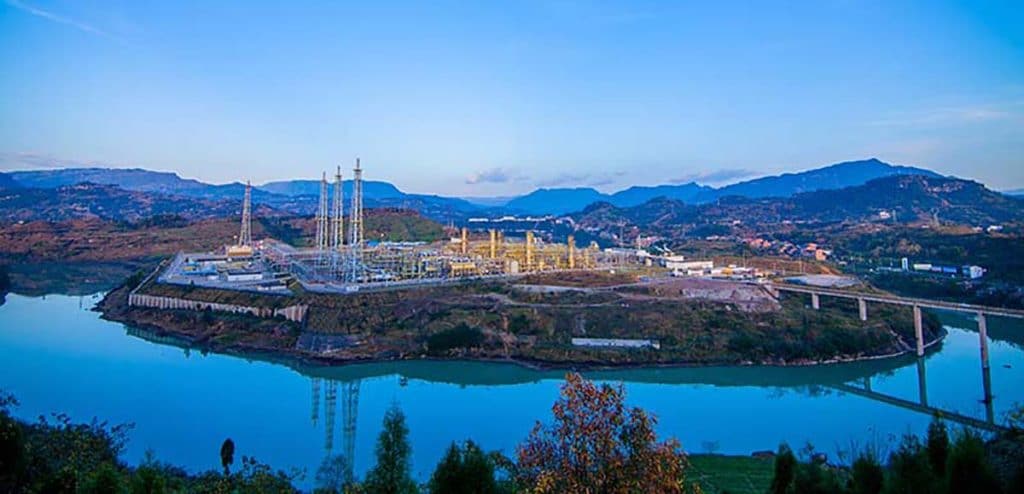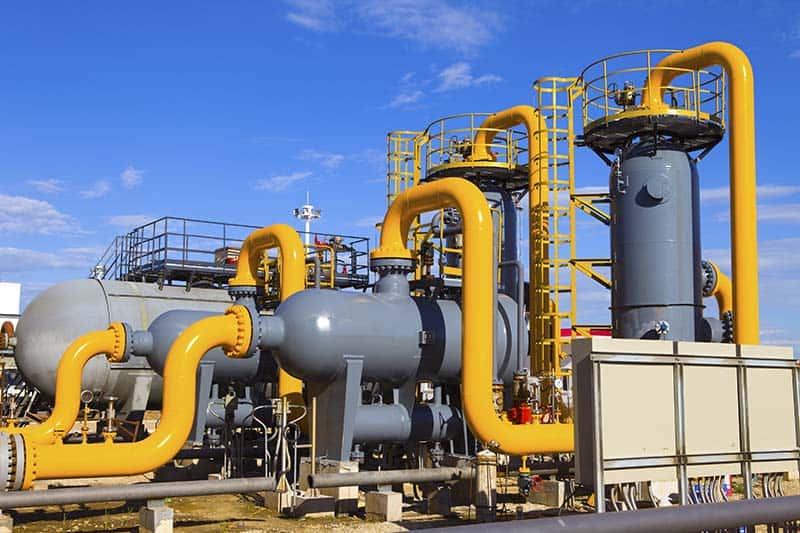CASE STUDY
OptaSense Protects Sour Gas Pipeline In Sichuan Province, China

Chuandongbei Natural Gas Project, Sichuan Basin, China
Problem:
- High concentration of H2S and CO2
- Previous blowout killed a number of local villagers
- Concern of damage done by PIG runs
Solution:
- OptaSense Pipeline Monitoring System installed along length of pipeline
- Highly sensitive leak detection provided along with TPI and PIG tracking
Value Delivered:
- Safe, reliable detection system with speed and high accuracy along the entire pipeline length
- Improved confidence and assurance
Project Overview
Chevron operates the 487,000-acre (1,969-sq-km) Chuandongbei (CDB) natural gas area in the onshore Sichuan Basin, China. Chevron has a 49 percent interest in the project, with PetroChina (CNPC) having the other 51 percent. The full development includes two sour gas (high hydrogen sulfide and carbon dioxide content) processing plants connected by a gas gathering system for five natural gas fields. Chuandongbei is a large onshore gas project that is an important supplier of clean and affordable energy to the rapidly growing economy in southwest China
In 2014, the company continued construction of the first natural gas processing plant and development of the Luojiazhai and Gunziping natural gas fields with a total design capacity of 558 million cubic feet of natural gas per day. Natural gas production began in 2016 when the first train came on line. The plant’s initial three trains had a combined design outlet capacity of 258 million cubic feet of natural gas per day. The Chuandongbei Project is estimated to contain potentially recoverable natural gas resources of 3 trillion cubic feet.
Because it carries high-concentration sour gas, a great deal of emphasis was placed on the gas and leak detection systems. The critical need for these detection systems was exacerbated after a blowout, years earlier, killed a number of local villagers. Additionally, during a PIG run, the pipeline was damaged, raising concerns among the local communities.
Solution Deployment
To address the customer’s needs, the OptaSense Pipeline Monitoring System (PMS) was installed along the pipeline. Unlike conventional pipeline leak detection systems, the OptaSense system uses distributed fiber-optic sensing (DFOS) technology to transform a standard telecommunication fiber-optic cable into a fully distributed sensor capable of detecting the physical characteristics of a leak, including changes in noise, temperature, pressure and ground strain—simultaneously and in real time. The
integration of these four modes into a single leak detection system not only provides improved sensitivity, it delivers the reliability required to identify and validate leaks faster and with more confidence.
The main hardware for the system, consisting of a single rack containing two OptaSense Interrogator Units and the DPS, is located in a central gathering station.

Enhanced leak detection software provides the client with additional smart zoning features isolate specific sections of the pipeline, adjusting to the environment and operating states at various locations.
Added Benefit
While the OptaSense PMS was initially installed to provide a fast, accurate leak detection solution, the ability of the system to provide multi-threat detection has expanded the scope of the solution to include third-party-intervention (TPI), such as manual or mechanical digging which can be major issues in creating leaks. While using the same fiber employed for leak detecition, the PMS takes advantage of exceptional additional signal processing and software development to provide a dedicated in-line PIG/scraper tracking function which is able to follow/track the PIG throughout the entire pipeline.
For more information, please contact your OptaSense representative or visit optasense.com/pipeline-monitoring.

